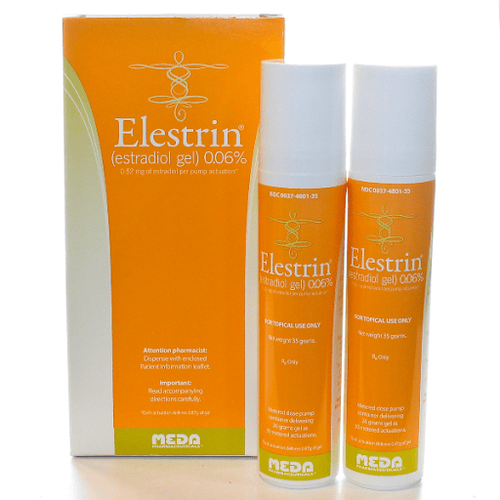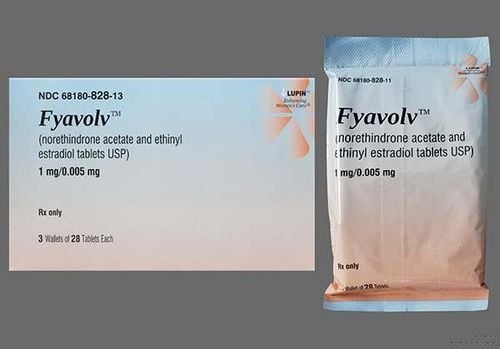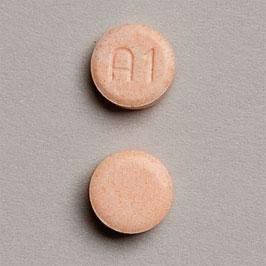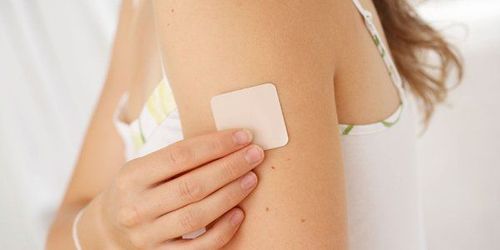This is an automatically translated article.
Xulane pills have main ingredients including Norelgestromin and Ethinyl estradiol, belonging to the group of combined oral contraceptives. Xulane is indicated for the prevention of pregnancy in women who choose to use the transdermal patch as a method of contraception. Find out information about the Xulane patch that will help improve the effectiveness of birth control.
1. What is Xulane?
Xulane drug is prepared under the skin patch, with the main ingredients including:
Active ingredient: Norelgestromin 4.86 mg. Ethinyl estradiol 0.53 mg. Excipients: Base layer: Polyethylene pigment, Polyester. Middle Layer: Polyisobutene, Crospovidone, Mineral Oil, Polyester Nonwoven Fabric, Oleyl Alcohol and Dipropylene glycol. Outer layer: Preservative layer. Norelgestromin is essentially a progestin that is largely responsible for the pregnancy that occurs in women. Ethinyl estradiol is essentially a synthetic estrogen. The combined hormonal birth control pill, Norelgestromin and Ethinyl estradiol works by inhibiting Gonadotropin, thereby inhibiting ovulation to prevent conception.
Xulane is indicated for the prevention of pregnancy in women who choose to use the transdermal patch as a method of contraception.
2. Contraindications of the drug Xulane
Do not use Xulane patch in the following cases:
Hypersensitivity to any ingredient of Xulane medicine. History of hypersensitivity reactions to other drugs containing the active ingredients Norelgestromin and Ethinyl estradiol. Women are at increased risk for arterial or venous thromboembolic diseases, which are common in: Women > 35 years of age who regularly use tobacco. Have a history of or current deep vein thrombosis or pulmonary embolism. Hereditary or acquired hypercoagulability. Cerebrovascular disease. Coronary artery disease. Have heart rhythm problems or thromboembolic heart rhythms such as subacute infective endocarditis with valvular disease, or atrial fibrillation. Uncontrolled hypertension. Diabetes with vascular disease. Headache with focal neurological symptoms or migraine. Women with liver tumors, benign or malignant, or other liver disease. Women with endometrial cancer or estrogen-dependent neoplasms. Women with unusual uterine bleeding of unknown cause. Pregnant women or those weighing > 90 kg. Women with a history of or current breast cancer or other estrogen- or progestin-sensitive cancers.
3. How to use Xulane
3.1. How to use: Xulane contraceptive patch will be applied continuously for 7 days. Before using the patch: Make sure the skin is clean and dry. Lotions, creams, oils, powders, or makeup should not be used at the site of application, as this may cause the patch to not adhere properly or become loose. The patch can be applied to the outer arm, abdomen, buttocks, or back where it is not rubbed by tight clothing. Do not apply the patch on your chest, on injured or irritated skin, or on the same spot as the previous patch. 3.2. Instructions for use: Case 1: Women who have not used hormonal contraception in the previous cycle
1st day/starting day: Apply the first patch on the first day of the menstrual cycle. Next week: Change the patch on the same day of the week (Example: If the first patch is used on Monday, all subsequent patches should be applied on Monday). The patch is replaced within 24 hours on the specified date. In the event that the patch is more than 24 hours old or the patch is peeled off at an unknown time, the next patch will be considered the first patch of the new period and should be used concurrently with other methods of contraception (non-intrauterine). period) as a condom for the first 7 days of the cycle. Week 4: No need to use the patch, ie only use the patch for the first 3 weeks (21 days). Day 1 of the next menstrual cycle: Repeat the same as the previous period. In the case of using the Xulane patch after the first day of the first menstrual cycle, it is recommended to use other (non-hormonal) contraceptive methods such as condoms for the first 7 days of the menstrual cycle. first month. Case 2: Switching from combined oral contraceptive pills to Xulane patch.
1st day/starting day: Apply the first patch on the first day of your period after stopping the pill. If there is no menstrual period within 5 days after using oral contraceptives, pregnancy should be excluded before using the Xulane patch. In the case of using the Xulane patch after the first day of menstruation due to discontinuation of the oral pill, other contraceptive methods (non-hormonal) such as condoms should be used during the first 7 days of the menstrual cycle. firstly. In the case of using the Xulane patch 7 days after taking the last active combined oral contraceptive pill, the patient should consult an obstetrician before use, because there may be ovulation phenomenon. Case 3: Postpartum
Initiation of birth control with Xulane in postpartum women who are not breastfeeding after at least 4 weeks postpartum. Change the patch in the same way as case 1. Case 4: After an abortion or miscarriage in the first 3 months
After an abortion or miscarriage in the first 3 months: Can start birth control with Xulane immediately and No need to add another method of contraception. After an abortion or miscarriage after the first 3 months: Start using the Xulane patch no earlier than 4 weeks. Changing the time of using the Xulane patch
When the patient wishes to change the date of the patch change, the current contraceptive cycle should be completed (using the 3rd patch). During week 4 (the patch-free week), the patient can choose a patch change date, which is considered the first day of a new cycle and does not require additional contraception.
4. Notes when using Xulane
4.1 Side effects encountered when using Xulane Contraception with the Xulane patch can cause side effects such as:
Reproductive system and breast: Breast pain, menstrual pain, vaginal bleeding and menstrual disorders moon. Digestive disorders: Nausea, vomiting, abdominal pain, diarrhea, abdominal distension. Nervous disorders: Dizziness, dizziness, headache, migraine. Psychiatric disorders: Anxiety disorders, insomnia, decreased libido or increased libido. Tissue and skin symptoms: Acne, pruritus, melasma, contact dermatitis, erythema, skin irritation. Other: Vaginal yeast infection, cholecystitis, hypertension, dyslipidemia, muscle spasms, hematuria, abnormal vaginal discharge, premenstrual syndrome, uterine spasms, vulvar dryness, embolism pulmonary embolism, weight loss. When detecting the above undesirable effects or any other abnormality after using the Xulane patch, it is necessary to promptly inform the doctor or pharmacist about the use of Xulane or immediately go to the medical facility for advice. timely handling.
4.2 Notes on the use of Xulane in subjects Caution should be taken when using the Xulane patch in women with a history of or currently suffering from thromboembolic disorders and other vascular problems, liver disease such as liver failure. decreased liver function, liver cancer, gallbladder disease, hypertension, diabetes, lipid metabolism disorders, persistent headache, abnormal vaginal bleeding, depression, cervical cancer or breast cancer, hereditary angioedema, melasma. Lactation: The effects of the Xulane patch in nursing mothers have not been properly evaluated. Therefore, advise nursing mothers to use other forms of contraception until they are fully weaned. In addition, oral contraceptives containing estrogen may decrease milk production in nursing mothers.
5. Xulane drug interactions
Interactions with other drugs
Drugs or herbal products such as Phenytoin, Barbiturates, Carbamazepine, Bosentan, Felbamate, Griseofulvin, Oxcarbazepine, Rifampicin, Topiramate, Rifabutin, Rufinamide can reduce the concentration of active substances in the blood, from reduce the effectiveness of the Xulane patch. CYP3A4 inhibitors such as Itraconazole, Voriconazole, Fluconazole, grapefruit juice or Ketoconazole may increase plasma hormone concentrations. Concomitant use of Atorvastatin or Rosuvastatin and the Xulane patch may increase the metabolic time of the active substances. HIV protease inhibitors such as Nelfinavir, Ritonavir, Darunavir/Ritonavir, Amprenavir/Ritonavir, Lopinavir/Ritonavir, and Tipranavir/ritonavir may increase blood levels of the active ingredient Xulane patch. HIV protease inhibitors such as Indinavir and Atazanavir/Ritonavir may decrease blood levels of the active ingredient Xulane patch. The active ingredient Ethinyl estradiol in the Xulane patch can inhibit the metabolism of the drugs Cyclosporin, Prednisolone, Theophylline, Tizanidine and Voriconazole. The hormones in the Xulane patch may decrease the plasma concentrations of Acetaminophen, Clofibric Acid, Morphin, Salicylic Acid and Temazepam. Women being treated with thyroid hormone replacement therapy may require an increased dose of thyroid hormone because serum concentrations of thyroid-bound Globulin are increased when co-administered with Xulane. Use of the Xulane patch may affect the results of certain laboratory tests, such as clotting factors, lipids, Glucose tolerance, and Binding proteins. Above is basic information about ingredients, uses, usage and notes when using Xulane contraceptive patch. In order to have the best contraceptive effect, patients should carefully read the instructions for use of Xulane, and strictly follow the treatment instructions of the obstetrician.
Please dial HOTLINE for more information or register for an appointment HERE. Download MyVinmec app to make appointments faster and to manage your bookings easily.













